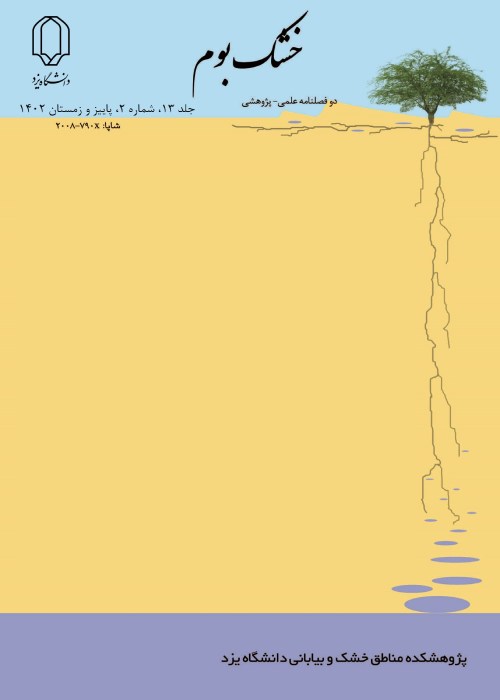Investigation of the effect of climate change on the distribution range of Prunus eburnea (Spach) Aitch. & Hemsl. using the Maxcent
Climate change affects plant distribution in vulnerable ecosystems, such as gray almond (Prunus eburnea (Spach) Aitch. & Hemsl.). Gray almond is a member of the Rosaceae family and it has conservational, nutritional and endemic importance and widely distributed in arid and semi-arid regions of Iran. The main objectives of this study are modeling the habitat suitability of the gray almond species using the Maxent model and predicting the effects of climate change on its distribution as well as determining the contribution of environmental variables in modeling the habitat suitability. Evaluating the accuracy of Maxent model using the mean area under the curve index (0.94) indicates the excellent performance of this model. Results showed that the soil depth and the solar radiation layers with 35.4% and 27.3%, respectively, had the highest share of participation in modeling of the habitat suitability of gray almond species. Based on the map of habitat suitability in the current climatic conditions, it is predicted that the southern regions (Hormozgan, Bushehr and Fars provinces), south-west (Kohgiluyeh, Boyer-Ahmad and Chaharmahal Bakhtiari provinces) and southeast (provinces) Sistan and Baluchestan, Kerman and South Khorasan) have the potential of suitable environmental conditions to expand the habitats of this species. In order to evaluate the effects of climate change on the habitat suitability of this species, the Representative Concentration Pathway 8.5 (greenhouse gas emission scenario) related to greenhouse gas emission model CCSM4 in the 2080 was used. According to Maxent model, the area of suitable habitat of this species in the current climatic conditions is 862113 Km2. Predicted based on RCP 8.5 in 2080, suitable areas that this species will lose 36.14% and gain new suitable habitats as much as 8.9%. It is predicted that the area of suitable habitat areas of this species will decrease to 627273 km2 in the future. According to the results, it is necessary to have better ecosystem management of conservation and exploitation of gray almond habitats in future.
- حق عضویت دریافتی صرف حمایت از نشریات عضو و نگهداری، تکمیل و توسعه مگیران میشود.
- پرداخت حق اشتراک و دانلود مقالات اجازه بازنشر آن در سایر رسانههای چاپی و دیجیتال را به کاربر نمیدهد.




